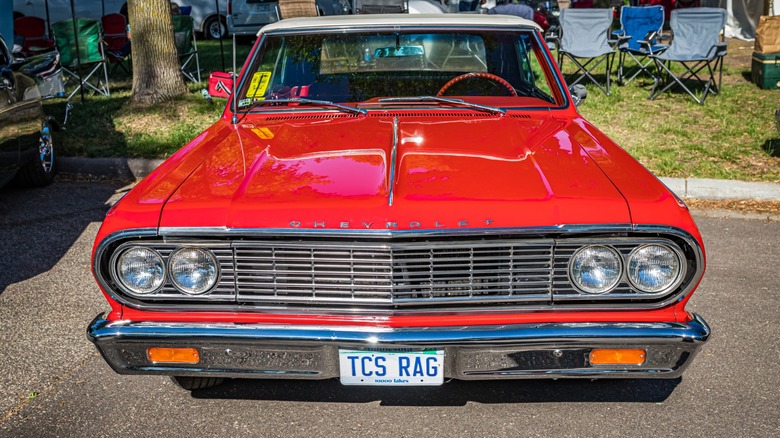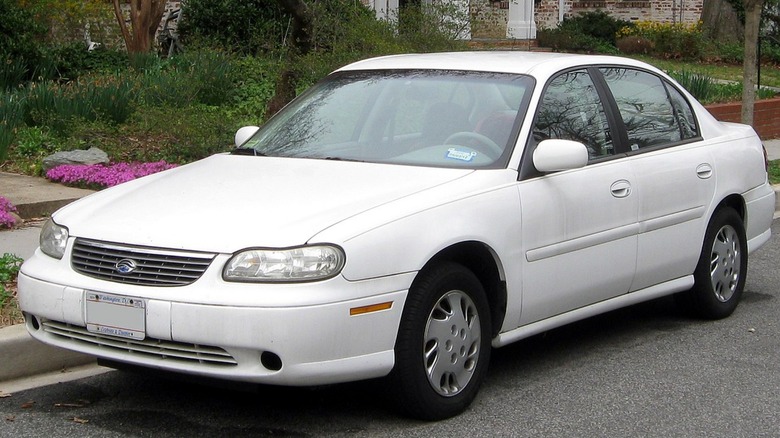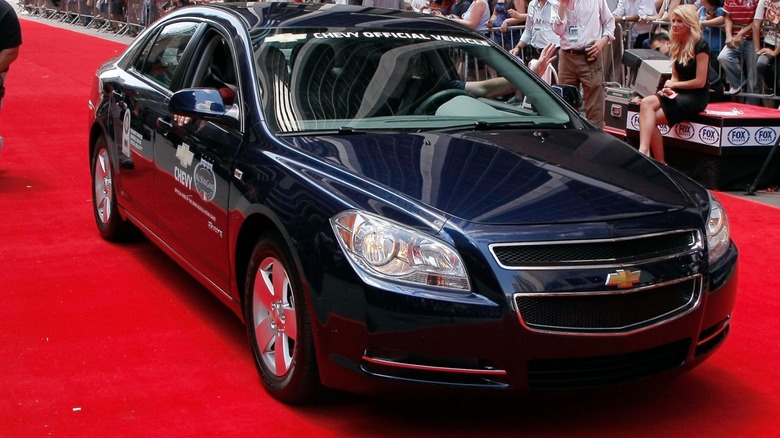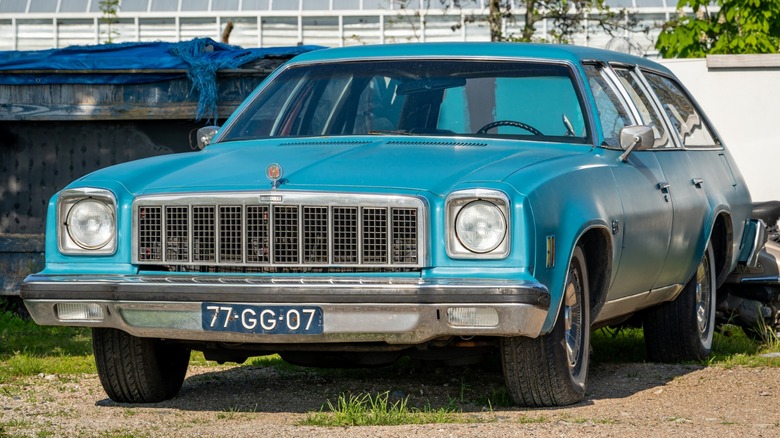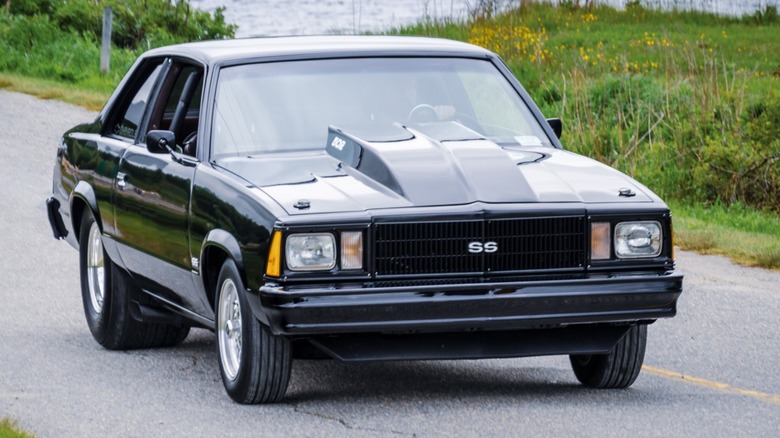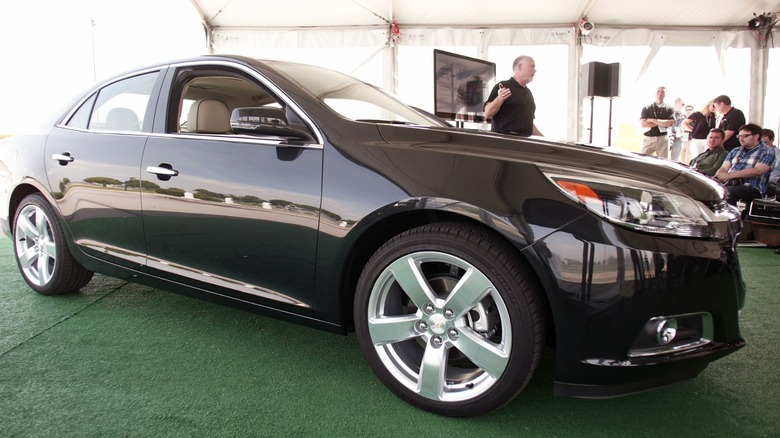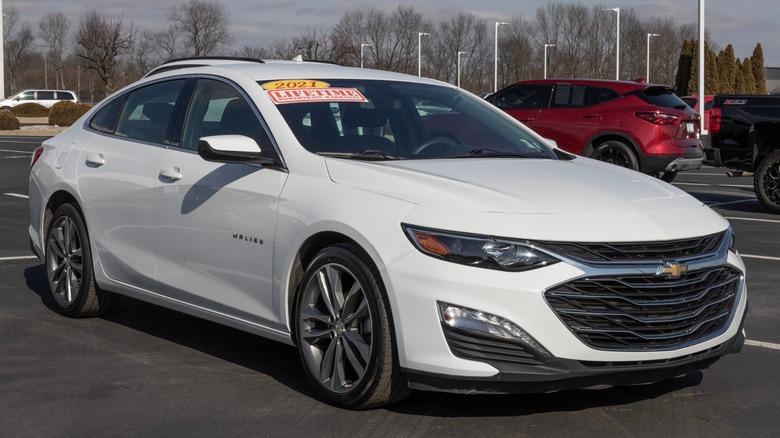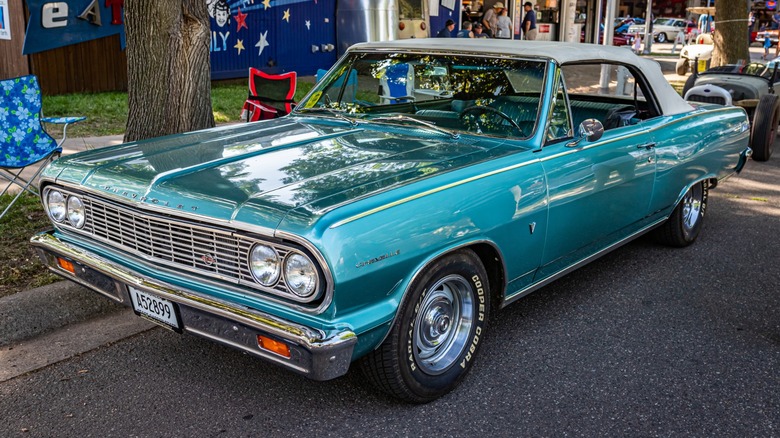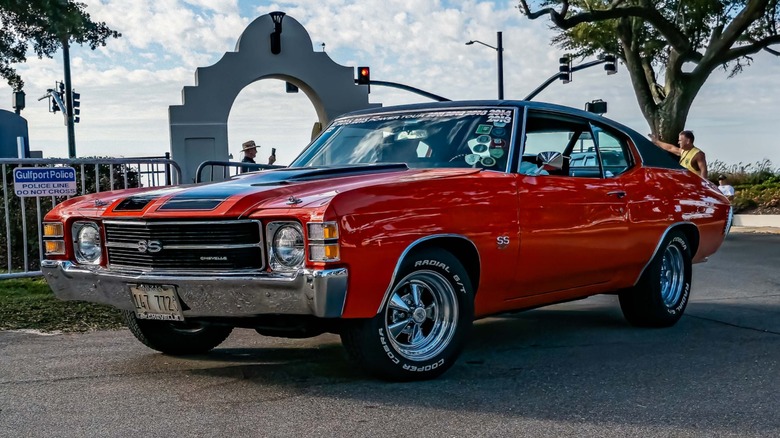The Best Years For Chevy Malibu (And Some To Avoid)
Roaming American streets and highways for decades, the Chevrolet Malibu is one of the most recognizable domestic cars to most Americans. The Malibu is an integral thread woven into the fabric of modern America and an indelible part of its automotive history, thanks to the 10 million cars sold over its lifetime. With so many units leaving factories around the country, there are thousands upon thousands of them still available on the used market, so it is worth having a second look.
Chevrolet made the decision to kill its last sedan in 2024, and the Malibu will cease to exist as a new car by the end of 2025. The death of the Malibu follows that of other domestic sedans as carmakers find customers shifting preferences for SUV and crossover models make the business case for a mid-size sedan less tenable than ever. Furthermore, plans shifting cars to electric platforms left no room to continue the Malibu nameplate, and a decades-old label isn't right for energizing consumers for the newer technology. Regardless, Malibus will be on the roads for many years to come, so here are the generations of Malibu to be on the lookout for and a few to avoid, starting with those.
1997-2003 Chevrolet Malibu (5th generation)
For the 1997 model year, Chevrolet announced a new mid-size sedan, reviving the Malibu name after a 14-year hiatus. Nostalgia had taken hold in the late '90s, and, in many ways, everything old was new again. However, while VW re-introduced the nostalgic and clever Beetle, Chevrolet merely brought back the name and slapped it onto a hunk of '90s blandness.
Between 1983 to 1997, engine and auto manufacturing technology had moved forward light years, especially compared to a period like 1963 to 1977. Fuel injection, high output electronic ignition, and other digital controls kept engines running efficiently and reliably while interiors saw airbags and dramatically increased safety thanks to crumple zones and anti-lock brakes. And for all these reasons, the 1997 Malibu should have been a superior car to any Malibu built before it — except in the end, it wasn't.
When considering on paper the 5th-gen Malibu shines compared to previous models. However, with its general lack of personality, this Malibu is the automotive equivalent to an appliance. It will get you places with relative comfort, and that's about it. Motor Trend may have perfectly summed up this Malibu when it said, "No one – not a soul – notices this car. I just blew by a CHP cruiser at 75, and he didn't even flinch. This may be the best car for speeding yet devised."
2004-2012 Chevrolet Malibu (6th generation)
A successful sales run of a new reintroduced Malibu into the Chevrolet lineup prompted the company to keep it around and release a redesigned model in 2003. While the previous generation is mostly known for generic styling, its successor can't be noted for dramatically improving things. It came loaded with options and accessories unheard of in previous generations, and the engine choices offered relatively generous power — the optional V6 produced 200 horsepower — but Motorweek was spot-on when it remarked that the Malibu was, "handsome, if not very distinctive."
Sure, the 2004 to 2008 Malibu is another fine car to get you places if the drive to get there is not meant to be an overly enjoyable part of the journey. However, the looks inside are not going to be the worst of it. The ride is going to be unpleasant as well. The suspension sends shockwaves through the occupants in an unsettling way, and it will have you ready to turn in the rental car and never buy one for yourself.
This Malibu is built on the GM Epsilon platform borrowed from its European division and meant to compete more directly with more upscale European sedans. It failed to do this. With vague electric power steering, body roll, and uninspired design, the 6th-gen Malibu was destined from the start for its primary duty, to be abused by rental car customers on holiday.
1973-1977 Chevrolet Malibu (3rd generation)
Just as with many, if not most, cars of the 1970s, the Chevrolet Malibu ballooned up to be the biggest iteration of the car's long run. Just as the EPA set new emissions standards for automakers, power output decreased and it seems that the manufacturers collectively thought to make up for the lack of power by adding girth to every model.
In 1973, the Malibu was still a trim level for the Chevelle model. Malibu and Malibu SS were available, but were both removed from the top of the range — the Laguna slotted in on top. This generation introduced the era of huge chrome bumpers installed to meet federally-mandated 5 mph impact standards. These are nice-looking cars that offered comfort from bouncy and broad bench seats while the suspension provided a springy and floating ride, although that did not do much for handling, as cornering was not its forte.
The early years of this generation yielded the models that might be considered cool, like the Chevy Malibu featured in the movie "Drive" with Ryan Gosling and Bryan Cranston. The high-performance SS and Laguna models went away by the end, and all Chevelle models became Malibus, with the Malibu Classic being the top trim level. These were never the most engaging cars to drive, but they were built at a time when cars still had individual style, and the Malibu still had it.
1978-1983 Chevrolet Malibu (4th generation)
As the '70s came to a close, Chevrolet booted the Chevelle from the lineup but kept the Malibu badge for a new mid-size replacement. This arrived as multiple crises of energy shortages, recession, and government regulations had American drivers tightening their belts and seeking more economical vehicles. The vehicles built in response arrived smaller and, for some reason, very boxy.
From 1978 to 1983, Malibu buyers were treated to a plainly-styled car with poor build quality. Power output had hit rock bottom and sales also took a hit. Engines ranged from a 3.3-liter inline-six to a 5.0-liter V8, and the latter only came with 150 horsepower, output doubled today by a 1.6-liter 3-cylinder Toyota Corolla. So the Malibu came at a bad time for Detroit and its biggest industry, but there are still reasons to buy one.
Today you will see effectively none of these cars on the road except for a few bought from estate sales. But you will see them at the drag races. These Malibus make great drag racers thanks to the ability to implant a powerful V8 under the hood and take advantage of the reduced weight over the larger Chevelles of the '60s and '70s. They have also not appreciated like some classic cars, making dilapidated basket cases cheap to pick up and turn into a track monster. What was once a dull grandma car can now be the hottest thing on the strip.
2013-2015 Chevrolet Malibu (8th generation)
While auto tech improved in the '90s and the range of features and accessories blossomed in the '00s, domestic automakers seemed to finally figure out how to combine these with decent quality and appealing design. By 2012, the Malibu's position within Chevrolet had solidified, appearing to have become a permanent addition. Furthermore, while it was still an affordable and basic family sedan, the styling and handling had improved much over the previous two generations.
Despite having improved itself over previous iterations, when Car and Driver had a look at the 2012 Malibu Eco along with five comparative models from the competition, it came in dead last. While the mild hybrid drivetrain contributed to the poor showing, problems with cabin space and vague steering input helped to drag it down, although the car did receive high marks for highway cruising. Regardless of any complaints from the press, the revised Malibu received a striking new interior featuring several high points, including the cockpit-style gauges reminiscent of the dual gauge pods of late '60s muscle cars. The material showed dramatic improvement and the cheap plastics had mostly disappeared.
Exterior styling of the 8th-gen Malibus was never a showstopper, but it remains a nice-looking sedan today, particularly from the rear with its separated quad tail lights. These are still very viable choices on the used car market and represent a fine car to buy, especially as there are many for less than $10,000.
2016-2025 Chevrolet Malibu (9th generation)
The current and final generation of Chevrolet Malibu is actually a great car that exists at the wrong time. This is why Chevrolet is killing off a good car and failed to update it for its final five years. The factory producing it will soon be retooled for production of Ultium, GM's new platform underpinning its electric vehicles. It's a shame as the Malibu had really come into its own. American car buyers just didn't care.
Inside the last Malibu, you will find yourself surrounded by premium materials, elegant design, and lots of tech. Heated and powered everything can be ordered along with a touch screen on everything else. Furthermore, power and economy are both excellent. Engine choices include a 1.6-liter turbo good for a modest but adequate 160 horsepower while the 2.0-liter turbo can have you driving the car as though it was meant for real fun with its 250-horsepower output.
Chevrolet offered the 2016 Malibu with hybrid drive, delivering up to 48 mpg, an impressive figure for a car that fits four adults comfortably. A Bose 9-speaker system, MyLink system, remote start, lane-keep assist, adaptive cruise control, and automatic braking further the list of convenience and safety features available in this affordable auto platform. It's a disappointment this model is going away as crossovers and SUVs just are not the same to drive as a good sedan. Perhaps some day American auto buyers will realize what they have lost.
1964-1967 Chevrolet Malibu (1st generation)
If you are into classic American cars, especially muscle cars, you are likely well aware of the legendary Malibus that existed through the muscle car era and all of the incredible power options available in them. However, things did not necessarily start that way. In its debut year, 1964, Malibu was a Chevelle trim package, which means you could order a brand new 1964 Chevelle Malibu SS with a 120-horsepower 194 straight-six. While SS may have stood for "Super Sport," that lowly six-cylinder did not. Furthermore, the top-ranging engine was a 220-horsepower 283 V8, meager offerings for a mid-size car.
Product managers saw the error of their ways and quickly expanded engine offerings and built the Chevelle Malibu into a premium muscle car worthy of praise. A 396 V8 Malibu SS was offered in '65 and '66, providing a healthy 325 horsepower, but the next year, Malibu SS trims were dropped altogether. Malibu trims continued to be offered for those who wanted a Chevelle with the best factory trim options.
Manufacturers often offered a dizzying array of options and packages in that era, leading to myriad ways to order a new car. But the Chevelle found a following and sales went well enough that it stuck around for a few years. Even though the Malibu was a mid-size car built for the masses, it was unique and today, it is a sought-after collector's item — nicely kept SS models can sell for upwards of $60,000.
1968-1972 Chevrolet Malibu (2nd generation)
While the new Chevelle Malibu in 1964 debuted as an attractive car with all the right styling cues for 1964, the updated second-generation Chevelle that came out in 1968 brought the style up a notch or two. The 1968 Chevelle Malibu also came around at a time when horsepower numbers were on a steady rise, providing Chevrolet an opportunity to compete with the GTOs, Torinos, and Belvederes also arriving from Detroit.
Many of the straight lines and square-cut corners of the original had gone as the Chevelle received a fastback-style trunk and a long sloping roof line. It was made to look faster, even when parked, and consumers like it. Again the Malibu badge was applied to luxury trim models and could be ordered with an increasing amount of power. Those who really wanted the muscle chose the Malibu SS396 to get the legendary V8 with 375 horsepower as a $347.60 option package.
In 1970, a 454 V8 option was added to the Malibu options list, making it the most powerful of all Malibus produced. You could still order one with a six-cylinder, and out of 442,046 produced, they represent less than 10% of all made. And while those are rare, the 454SS are the most rare and have become extraordinarily valuable today. They are a good Malibu to own, but they will set you back north of $100,000 for the pleasure. That is pricey, but also the coolest Malibu of all.
